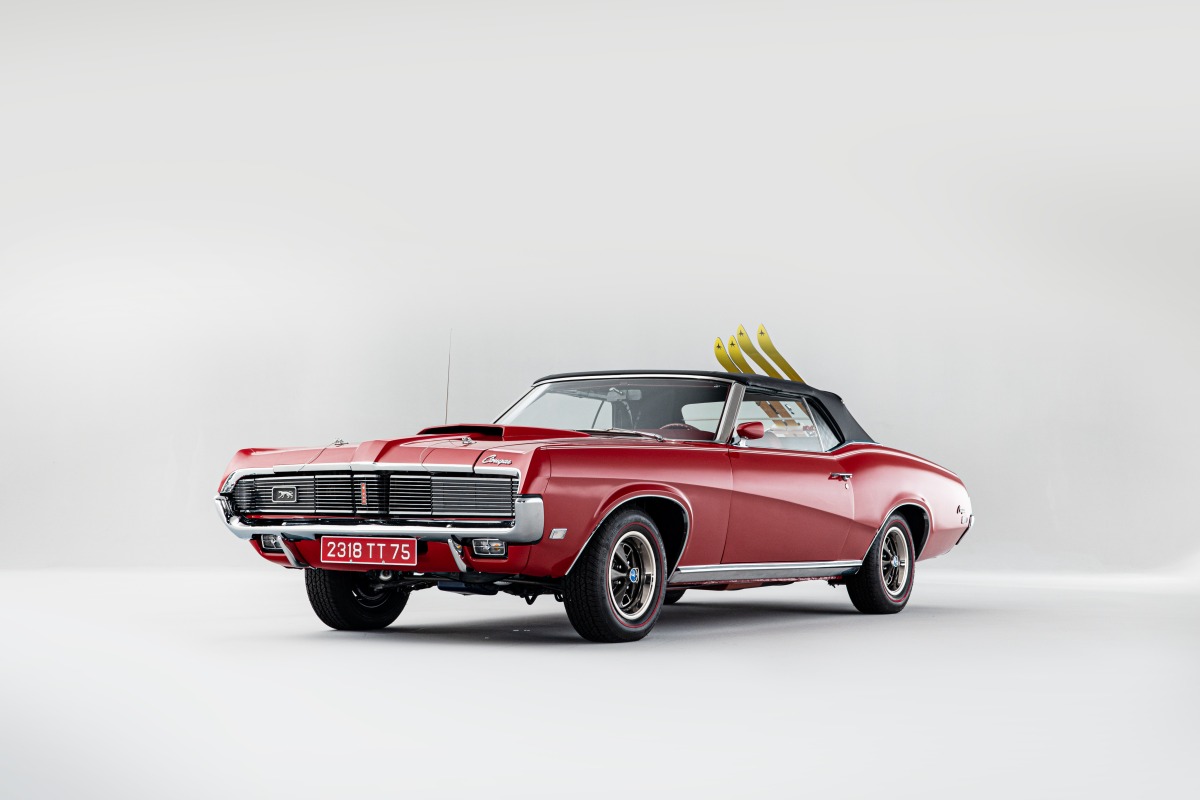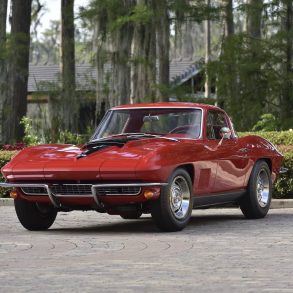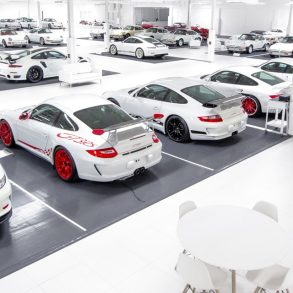Bonhams Bond Street Sale will be holding an auction of motor cars and automobilia on 16 December 2020. The sale is planned as a traditional live auction, and subject to COVID-19 restrictions, limited numbers of clients will be permitted in the salesroom. In addition to attendance on the day, Bonahms will be accepting remote online, telephone, and absentee bids.
Three standout vehicles to be auctioned on the day are a 1969 Mercury Cougar XR7 Convertible, a 1953 Bentley Continental Sports Saloon and a 1967 Aston Martin DB6 Vantage Volante.
1969 Mercury Cougar XR7 Convertible
Estimate: £100,000 – 150,000.
A 1969 Mercury Cougar XR7 convertible that starred in the 007 Bond film ‘On Her Majesty’s Secret Service‘ will be offered for the first time at auction following a detailed restoration.

The ‘Bond Girl’ Contessa Teresa (Tracy) di Vicenzo, played by the late Dame Diana Rigg, owned the Mercury Cougar during the film, and the car featured in a scene where it was dramatically driven on the ice during a high-speed car chase scene.

Three identical Cougars were procured from Ford’s luxury division Mercury for the film in 1969. The car to be auctioned is suggested to have been used in the ‘barn scene’ when 007, proposed to Tracy as they sheltered in the car from a blizzard.

The Cougar was a special order and this example was constructed on 6 February 1969 where it was registered in the UK a week later. In 1969 only 127 XR7 convertibles were powered by the sought-after Jet Ram V8 engine, with this example being one of them.

The car’s body is finished in red with a matching leather interior. During filming, it was outfitted with Kneissl skis and red French temporary ‘visitor’ registration plates.

When originally purchased by the vendor in the late 1980s the car was far from red carpet condition. However, over a 30 year period, the Cougar has been brought up to concourse standard following a ‘nut and bolt’ restoration.
1953 Bentley Continental Sports Saloon
Estimate £550,000 – 700,000
In 1951, the six-cylinder, inlet-over-exhaust engine by Rolls-Royce was enlarged to 4,556cc, from 4,257cc. The Continental profited from an increase in compression ratio with the maximum power output, although unquoted, estimated to be around 153bhp.
Until early 1954, only the four-speed manual gearbox was offered before the first Continentals with automatic transmission left the factory.

There was an inevitable increase in weight as the Continental matured, but around May 1954, it was offset with the introduction of a 4,887cc engine on the ‘D’ and ‘E’ series cars.
If it was a sports car, the excellent performance of the Continental would be considered praiseworthy, but given it’s a full four/dive-seater saloon, it is downright exceptional. It has a top speed of 120 mph, with the third gear capable of reaching 100 mph, and it can go from 0 to 50 mph in just over 9 seconds.

The Continental was originally built only for export, and once delivery and local taxes were factored in, it was the most expensive car in the world. It was also the fastest car that was capable of carrying four full adults as well as their luggage.
The ‘BC22A’ was one of the first 25 cars that were produced on the Mark VI chassis. On July 21, 1953, it was delivered to its first owner, Charles Gillett through the Garage de l’Athénée of Geneva, Switzerland. The BC22A was outfitted in black with off-white trim finish, fitted with lightweight seats, and a manual gearbox.

In 1972 when its Canadian owner, William Nicholson, took possession of the example it was fitted with a Rolls-Royce radiator. Other modifications done on the example included a tuned S-series engine, twin exhausts, one-piece tail lamps, all of which were supposedly inspired by the description of James Bond’s Continental by Ian Fleming. Fleming was a great fan of the Continental and drove one for six months in the UK.
BC22A was subsequently dismantled completely for a body-off restoration, and it remained so for years that followed.

The Bentley changed hands in 1993, and was passed on to Mark Clark who had it restored in 1996, bringing back its original Bentley radiator and tail lamps and keeping the tuned engine.
Since its return to Europe back in the early 2000s, the ‘BC22A’ has covered 16,500 miles, and almost all under the vendor. The example has participated in two Bentley Driver’s Club tours to the South of France, both events going smoothly without fault.

The example is an enticing early and rare A-series model, equipped with the coveted lightweight seats and manual transmission.
It is presented in an overall excellent condition, but due to the electrolytic reaction between the alloy body and other metal, there was some paint that has been lifted in isolated areas.

The example boasts of an engine that is a lot more powerful than standard as well as other sensible upgrades that improves not only the performance and reliability but also the driving experience.
1967 Aston Martin DB6 Vantage Volante Convertible
Estimate £550,000 – 650,000
Introduced in 1965, the DB6 was the peak of Aston Martin’s long-running line of ‘DB’ six-cylinder sports saloons, and considered by many enthusiasts to be the final ‘real’ Aston.

Despite being assisted by Aston Martin’s DB5’ appearance in ‘Goldfinger’ and Thunderball,’ two of the James Bond movies, the launch of the DB6 was a trying time for Aston Martin, with the home economy having problems along with the ever more restrictive legislation that was being passed by the US market.
The heavy influence of the Touring-styled DB4 could be seen in the DB6, but it is also noticeable how they went away from the Superleggera body structure, instead, using a conventional steel fabrication and keeping the aluminum outer panels.

It is interesting to note that the Superleggera badges were still being used when the DB6 was released, presumably they were used until the stocks ran out.
One of the main objectives of the DB6 was increased rear-seat space, and to achieve this, they added four inches to the wheelbase, resulting in a large restyling. This included raising the roofline, a more raked windscreen along with reshaping the rear quarter windows.

The rear was extensively changed with the addition of a Kamm-style tail with a spoiler to improve aerodynamics and stability at high speeds. The device was first seen on the DP214 and DP215 DB4FT-based Le Mans prototypes, another instance where racing contributed greatly in improving the models. Despite all the changes on the DB6, the design team was able to incorporate them successfully and only added two inches in length compared to its predecessor. In fact aside from the obvious Kamm tail, the DB6 can easily be mistaken for the DB5.
Except for increasing the Tadek Marek-designed six-cylinder engine to 3,995cc for the DB5, the engine was unchanged. The triple SU carburetors’ power output was 282bhp, and with the Vantage specification, it was increased to 325bhp.
The ZF five-speed gearbox came in as standard in addition to the Borg-Warner automatic transmission. Air conditioning and power-assisted steering were offered as options for the first time.

The DB6 convertible version made its debut at the 1965 London Motor Show. It would mark the first time that the ‘Volante’ name was given to a soft-top Aston Martin.
Once thirty-seven Volante convertibles had been finished on the DB5 short-wheelbase chassis, the design utilized the longer DB6 chassis in October 1966. During that year’s London motor show, the Volante was on display. The Volante could accommodate four passengers (including the driver) and came with deep-pile carpets, leather upholstery, an aircraft-style instrument cluster, as well as an electrically operated hood.
In 1969, Aston Martin announced the Mark II DB6 would be available in both saloon and convertible versions. The Mark II is distinguished by its flared wheel arches and DBS wheels, as well as the power-assisted steering as standard.
From 1965 until 1970, there were 1,575 DB6 saloons that were produced. As for the long-wheelbase Volantes, Aston Martin only produced 178 units.

Despite the DB6 being the most evolved and practical version in the DB family, it remains to be one of the most affordable models.
The example is one of only 140 Mark I DB6 Volantes that were produced, and one of only 29 which had the Vantage engine fitted.
The vehicle has been in the possession of the vendor’s family for the last 44 years. In the mid to late 1980s, DK Engineering did an extensive restoration on the example and the details of the work can be seen in the correspondence and the detailed bills on file.
The Aston is currently being used for summertime touring, boasting an extended-range fuel tanks. . The exquisite example of the DB6 Vantage Volante is the embodiment of British open-top motoring in the 1960s.
More information regarding the 2020 Bonhams Bond Street Sale can be found on their website.
[Source: Bonhams]










